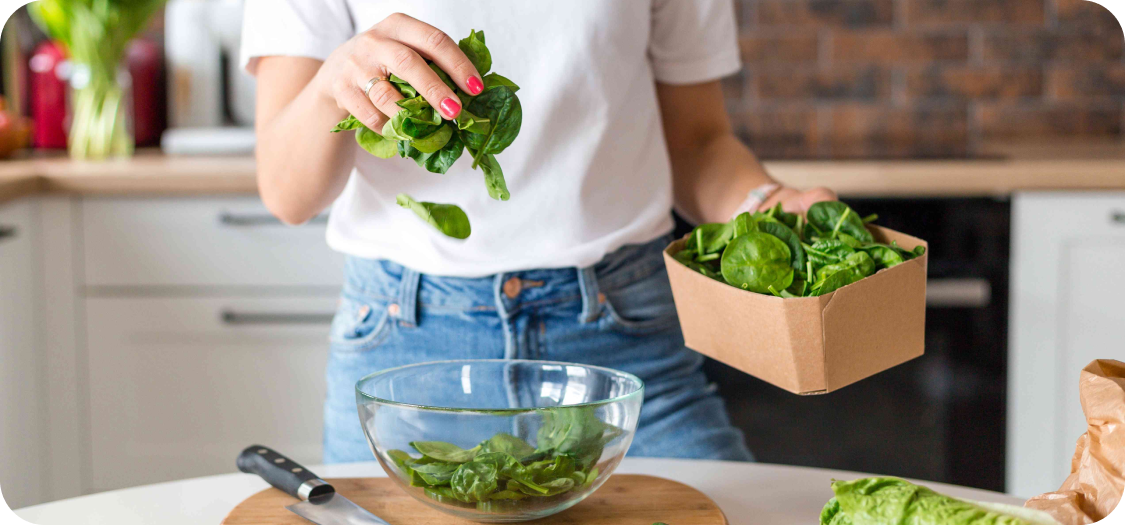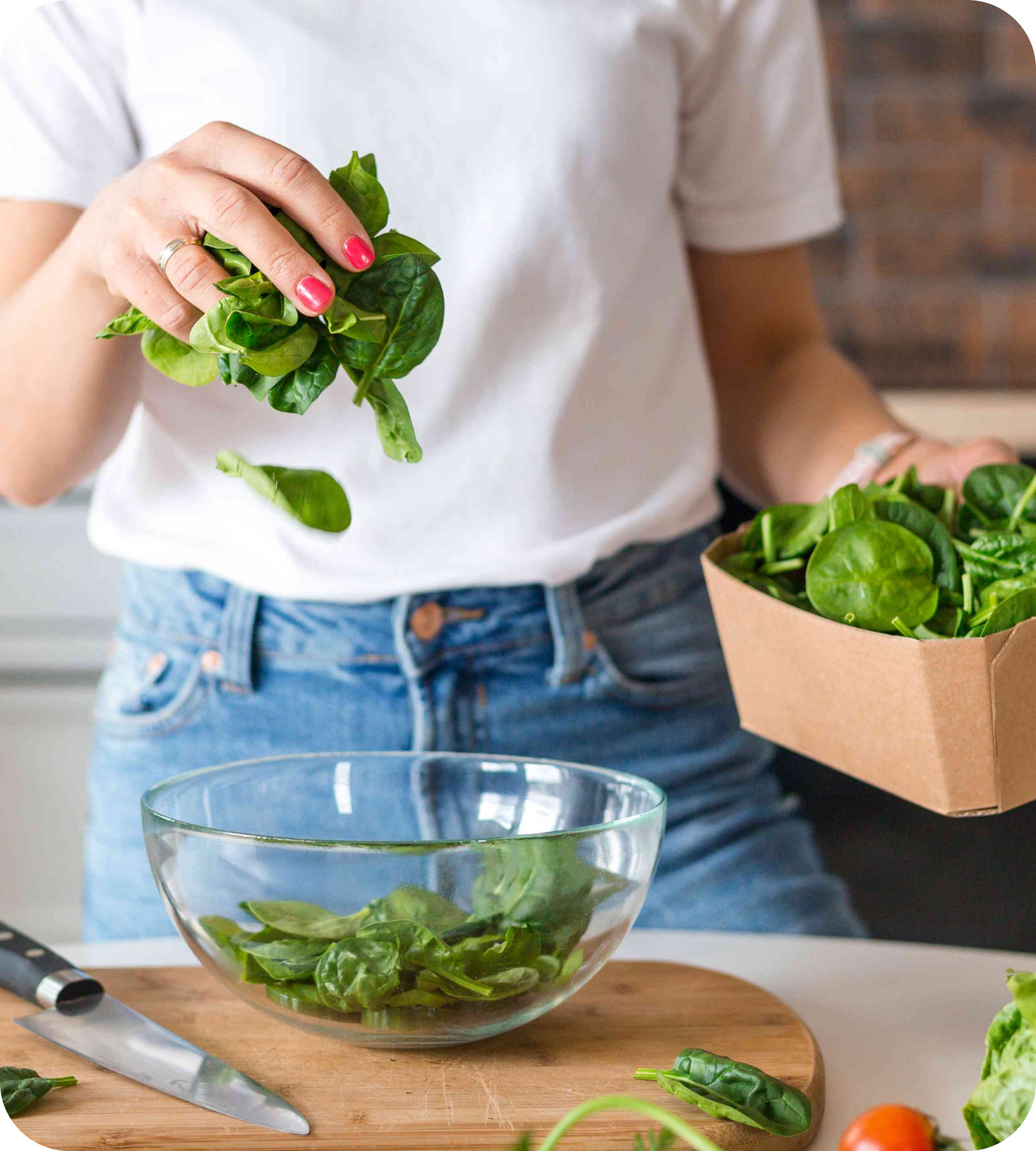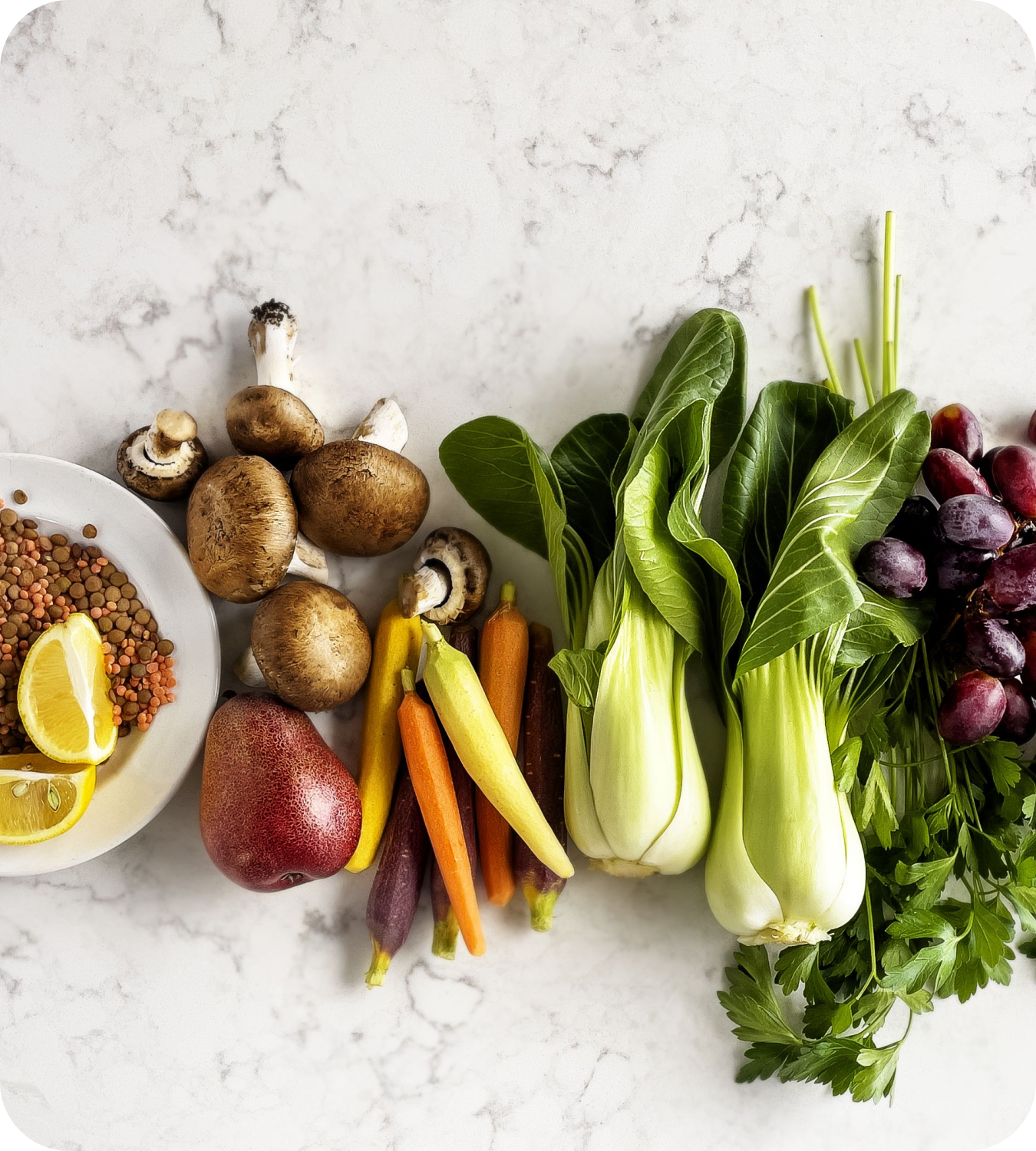Are you aiming to lose weight? If yes, you should practice Volume eating by incorporating high-volume foods. Wondering what are high volume foods? These are low-calorie foods that have a high water or fiber content. These foods help you feel full and satisfied without consuming a large number of calories. Including these high-volume foods in your diet can help you control hunger, manage weight, and improve overall nutrition.
Through this article, let’s understand high-volume foods, volume eating, and its benefits in brief.
Key Takeaways:
- Reducing calorie intake can be one of the most difficult dietary adjustments. Consuming low-calorie meals can make you feel unsatisfied.
- High-volume, low-calorie foods are those nutrient-loaded foods that can keep you full and satisfied, helping you lose weight.
- These foods are high in dietary fiber, water content, vitamins, and minerals that nourish the body and suppress appetite.
What is Volume Eating?


Volume eating refers to consuming foods that are low in calories but high in volume and nutrients. The concept behind volume eating is to focus on filling up your plate with low-calorie, high-fiber foods that can help you feel full and satisfied while consuming fewer calories.
Some examples of volume foods include vegetables like broccoli, cauliflower, spinach, and cucumbers, as well as fruits like berries, apples, and oranges. These foods are rich in nutrients, water, and fiber, which can create a sense of fullness, and they are generally lower in calories compared to more calorie-dense foods like processed snacks or high-fat meals.
By incorporating more volume foods into your diet, you can increase the overall quantity of food you consume while staying within your calorie range. It can help with weight management, satiety, and maintaining a balanced diet.
How Does Volume Eating Help You Lose Weight?
Volume eating can help with weight loss because it involves consuming larger quantities of low-calorie, high-volume foods that can help you feel full while consuming fewer calories overall. Some ways in which volume eating promotes weight loss include:
- Increased Satiety: High-volume foods, such as fruits, vegetables, and whole grains, often contain a lot of water and fiber, which can help fill your stomach and make you feel fuller for longer periods. This can reduce the likelihood of overeating and help control hunger.
- Lower calorie density: Volume eating focuses on consuming foods that have a low-calorie density, meaning they have fewer calories per gram. By choosing these foods, you can consume a larger volume of food for the same or even fewer calories compared to higher-calorie-dense foods.
- Nutrient-rich choices: Volume eating typically involves selecting nutrient-dense foods that are low in calories but rich in essential vitamins, minerals, and antioxidants. This ensures that you're meeting your nutritional needs while maintaining a calorie deficit, which is essential for weight loss and overall health.
- Enhances mindful eating: Volume eating often encourages paying attention to your hunger and fullness cues. By being mindful of your eating habits and listening to your body, you can better control portion sizes and avoid mindless snacking, which can contribute to weight gain.
It's important to note that although volume eating can be a helpful strategy, it should be combined with a well-balanced diet and regular physical activity for optimal weight loss results.
Benefits of Volume Eating
- Weight management: Volume eating can be an effective strategy for weight management. By consuming large volumes of low-calorie foods, individuals can feel satisfied while keeping their calorie intake in check.
- Improved nutrient intake: Many high-volume foods, are packed with essential nutrients and antioxidants. By incorporating more of these foods into their diet, individuals can improve their overall nutrient intake and support their overall health.
- Enhanced digestive health: Volume eating promotes increased fiber intake, which can aid in digestion and prevent constipation. Fiber also helps maintain a healthy gut microbiome, which is important for overall digestive health.
- Increased hydration: Many high-volume foods, such as water-rich fruits and vegetables, contribute to overall hydration. Staying hydrated is important for various bodily functions, including digestion, nutrient absorption, and maintaining proper body temperature.
- Reduced risk of chronic diseases: Consuming a high volume of fruits and vegetables has been linked to a reduced risk of chronic diseases, such as heart disease, type 2 diabetes, and certain types of cancer. These foods are rich in antioxidants and other beneficial compounds that help protect against cellular damage and inflammation.
- Lower calorie density: Volume eating focuses on low-calorie, high-volume foods. These foods tend to have a low calorie density, meaning they provide fewer calories per unit of volume. This can be helpful for individuals who are trying to manage their calorie intake and lose weight.
- Improved portion control: Volume eating encourages individuals to focus on the volume of food they consume rather than the calorie content. This can help improve portion control habits and prevent overeating.
- Increased variety in the diet: By incorporating more high-volume foods into their diet, individuals are likely to consume a wider variety of fruits, vegetables, and other nutrient-dense foods. This can help ensure a more balanced and diverse nutrient intake.
- Improved overall health: Volume eating, when combined with a balanced diet and regular physical activity, can contribute to overall health and well-being. It provides an easy way to increase the consumption of nutrient-dense foods, reduce calorie intake, and maintain a healthy weight.
Best High Volume Low Calorie Foods


-
Celery:
With only 6 calories per stalk, celery is praised for its high water content and fibrous texture, making it a great low-calorie option for snacking or adding to dishes. -
Zucchini:
This vegetable is low in calories (with only 20 calories per cup), high in water content, and can be substituted for higher-calorie ingredients like pasta or bread. -
Watermelon:
Watermelon is a juicy fruit with a high water content, making it a delicious and refreshing low-calorie option. -
Broth-based soups:
Soups that are primarily broth-based (such as vegetable or chicken broth) can be very filling and low in calories, as opposed to cream-based soups. -
Cucumbers:
Cucumbers are low-calorie, extremely hydrating with a high water content (about 95%), making them a great choice for staying hydrated and feeling full. -
Popcorn:
Air-popped popcorn is a whole grain that is high in fiber and relatively low in calories, making it a satisfying high-volume snack option. -
Mushrooms:
These fungi have a meaty texture and can be used as a low-calorie replacement for higher-calorie ingredients like beef or sausage in recipes. -
Grapefruit:
Grapefruit is high in water content, low in calories, and can help curb appetite due to its fiber content. -
Asparagus:
Asparagus is a nutrient-dense vegetable that is low in calories and high in fiber, making it a great option for adding volume to meals without adding excessive calories. -
Greek yogurt:
This high-protein food helps keep you full for longer. Choose plain Greek yogurt and add fresh fruits or a drizzle of honey for flavor without adding too many calories. -
Strawberries:
Strawberries are sweet, low-calorie fruits that are high in water content and packed with antioxidants.
Remember, portion control and balanced nutrition are also important factors when considering high-volume, low-calorie foods. However, for personalized dietary advice., always consult a nutrition expert.
Are High Volume Foods Healthy?


High volume foods can be healthy, but it depends on the specific foods and how they are prepared. High volume foods are typically low in calories but high in fiber, which can help with weight management and promote feelings of fullness. These foods are often fruits, vegetables, and whole grains, which provide essential nutrients and promote overall health. However, it is important to consider the overall balance of nutrients in your diet and to ensure you are meeting your individual nutritional needs.
Conclusion

High volume low-calorie foods are a smart choice for individuals looking to manage their weight or lose weight. They offer a high volume of food while keeping the calorie content low, helping to create a feeling of fullness without consuming excessive energy. By incorporating these foods into a balanced diet, individuals can enjoy satisfying meals while reaching their weight management goals.
















![How Much Pre-Workout Should I Take? [2024 Guide]](http://awesomecoffee.com/cdn/shop/articles/How-Much-Pre-Workout-Should-I-Take_main_650x576_crop_center.png?v=1708423158)






